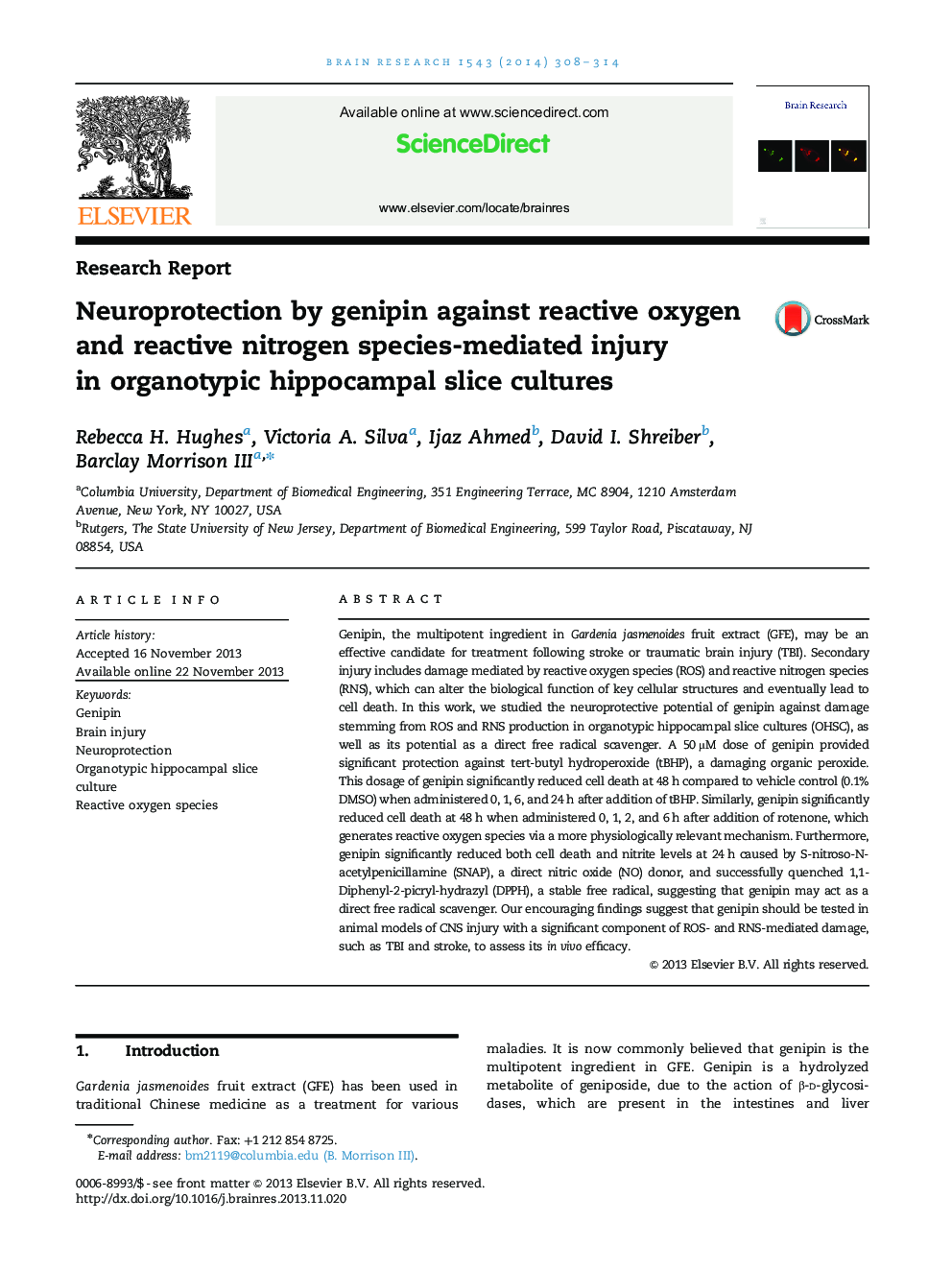| کد مقاله | کد نشریه | سال انتشار | مقاله انگلیسی | نسخه تمام متن |
|---|---|---|---|---|
| 6263469 | 1613896 | 2014 | 7 صفحه PDF | دانلود رایگان |
- The natural product, genipin, protects against damage mediated by reactive oxygen and nitrogen species.
- There are potentially several mechanisms of genipin protection.
- Genipin also acts as a direct free-radical scavenger.
- Genipin may be an appropriate candidate for treatment following brain injury.
Genipin, the multipotent ingredient in Gardenia jasmenoides fruit extract (GFE), may be an effective candidate for treatment following stroke or traumatic brain injury (TBI). Secondary injury includes damage mediated by reactive oxygen species (ROS) and reactive nitrogen species (RNS), which can alter the biological function of key cellular structures and eventually lead to cell death. In this work, we studied the neuroprotective potential of genipin against damage stemming from ROS and RNS production in organotypic hippocampal slice cultures (OHSC), as well as its potential as a direct free radical scavenger. A 50 µM dose of genipin provided significant protection against tert-butyl hydroperoxide (tBHP), a damaging organic peroxide. This dosage of genipin significantly reduced cell death at 48 h compared to vehicle control (0.1% DMSO) when administered 0, 1, 6, and 24 h after addition of tBHP. Similarly, genipin significantly reduced cell death at 48 h when administered 0, 1, 2, and 6 h after addition of rotenone, which generates reactive oxygen species via a more physiologically relevant mechanism. Furthermore, genipin significantly reduced both cell death and nitrite levels at 24 h caused by S-nitroso-N-acetylpenicillamine (SNAP), a direct nitric oxide (NO) donor, and successfully quenched 1,1-Diphenyl-2-picryl-hydrazyl (DPPH), a stable free radical, suggesting that genipin may act as a direct free radical scavenger. Our encouraging findings suggest that genipin should be tested in animal models of CNS injury with a significant component of ROS- and RNS-mediated damage, such as TBI and stroke, to assess its in vivo efficacy.
Journal: Brain Research - Volume 1543, 16 January 2014, Pages 308-314
